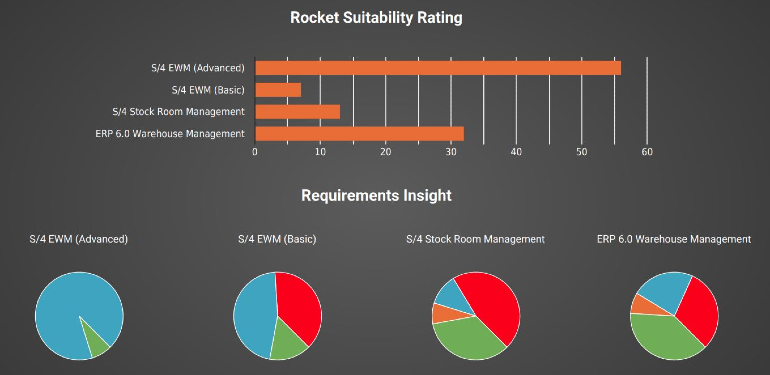- Learn
-
Network
- Featured Event:
- Collaborate
- Influence
- Partners
-

-

Understanding the difference between the different SAP warehouse management platforms – Stockroom Management, Warehouse Management (WM), EWM Decentralised (Basic) and EWM Embedded (Advanced) - can be a real challenge, so here is a quick outline of what’s currently available:
SAP Extended Warehouse Management (EWM) is a comprehensive warehouse solution using shared resources across your supply chain landscape. SAP EWM can be used in one of two modes - Basic or Advanced. To get some guidance on which one would suit you best, check out our blog for more details.
Making the right platform selection is an essential part of the project business case, ensuring alignments across strategic business, IT, operations objectives, as well as key functional requirements. With these four options available, where do you start in choosing the right solution?
The Rocket SAP Warehouse Management System (WMS) assessment tool provides IT and supply chain leaders with a method to rapidly align the WMS platform capability with their specific needs. It can help clarify your business needs and help to unpick the complexity of the solutions available so you pick the best SAP solution for you. Providing transparent results with detailed visual insights, it helps create robust reporting to engage and influence key stakeholders in support of the project from the outset.

Taking a condensed set of requirements based on what typically drives platform decisions, and evaluating these against the severity of needs, ‘not required’, ‘nice to have’, ‘required’ or ‘must have’, the evaluation logic matches the business requirements you have highlighted against the capability of the platform. The unique scoring matrix provides a suitability rating, recommending the most appropriate platform, which often is not the most costly or complex.
The results also come with detailed insights that show the proportion of requirements that fit, exceed, partially meet or have gaps, which offers customers real transparency and a deeper understanding of the scoring process and the choices available. Customers can access detailed personalised requirements analysis where line by line they are shown exactly how the recommendation has been built. You will see where there are gaps and also where the solution exceeded input requirements. This transparency also shows the weighting on each and every level of functionality, helping customers evaluate the benefit per each functionality item.
< Back to all Partner newsOur latest insights and thoughts